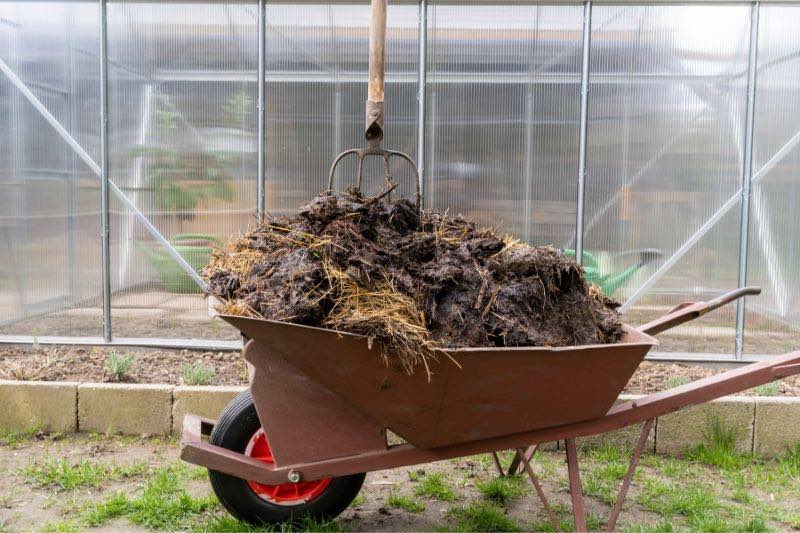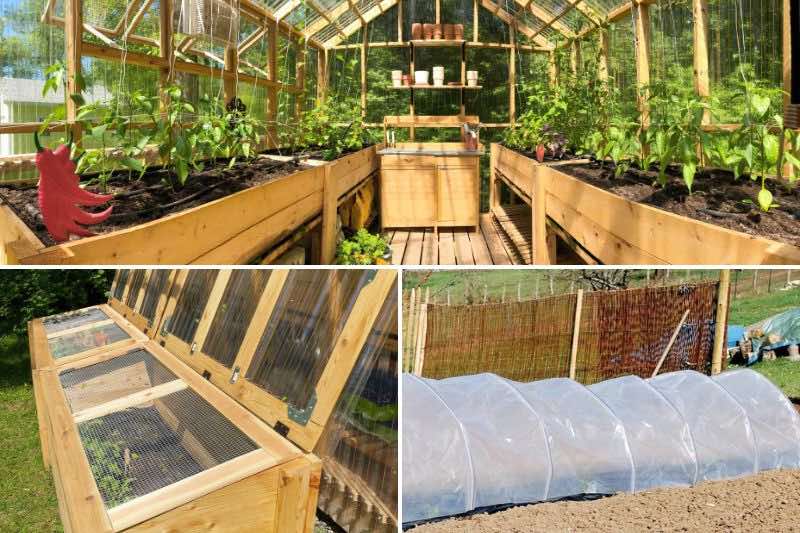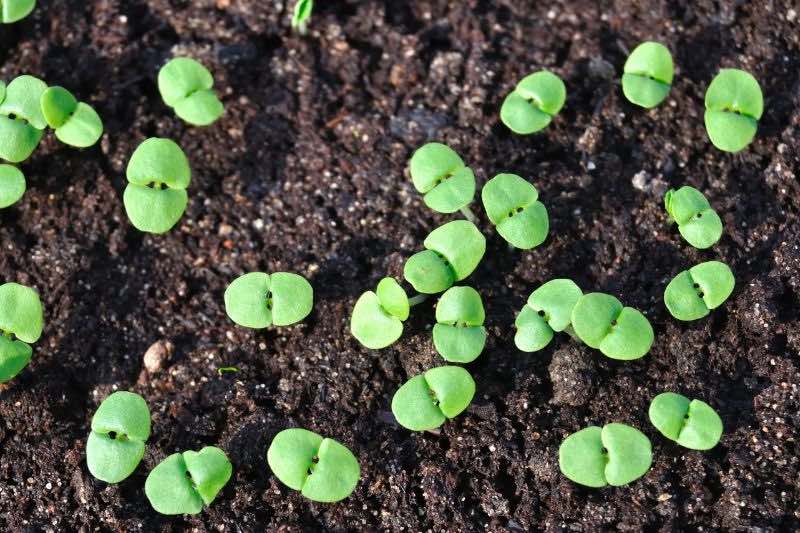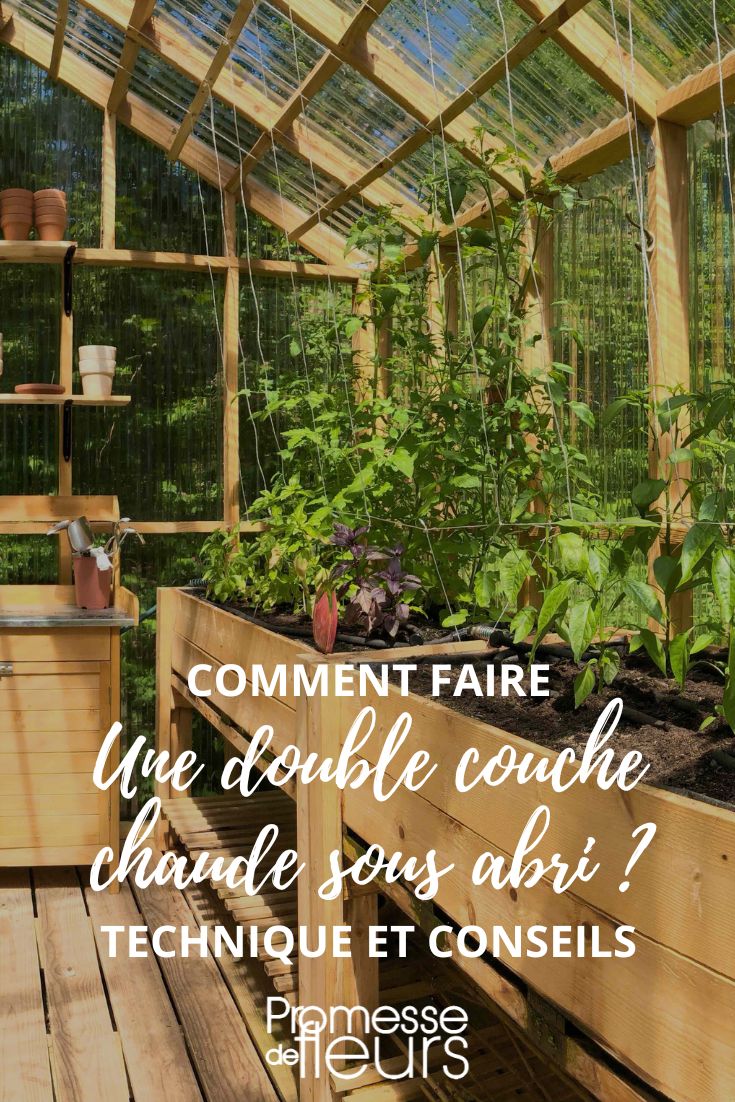Looking to boost plant growth and optimise gardening? Discover our complete guide to creating a double hotbed under cover. This innovative technique lets you create an ideal environment for crops by harnessing natural heat and maximising protection against weather and pests. Follow our step-by-step advice and master art of the double hotbed for a flourishing, productive garden all year round.
What is a double hotbed?
A double hotbed is a gardening technique that involves layering two layers of organic material, typically manure and compost, to create an environment favourable to germination and plant growth. The principle is simple: decomposition of organic matter generates heat, helping to maintain a constant temperature favourable to seedling development. This method is particularly effective in permaculture, where the aim is to optimise natural resources and reduce ecological footprint.

Why create a double hotbed under cover?
Double hotbed under cover offers several advantages. First, it allows early sowing, even in winter, by creating a warmer, more humid microclimate. Next, it promotes rapid plant growth, reducing time from sowing to harvest. Finally, this technique protects plants from bad weather and pests, improving their health and productivity.
Which types of cover are suitable for a hotbed?
To create a double hotbed, it is essential to choose the right type of cover that both provides adequate protection from the elements and helps retain heat. Use of a transparent or semi-transparent cover that captures sunlight is recommended.
Here are some types of cover commonly used to create a double hotbed :
- A glass or clear-plastic greenhouse that traps solar heat, creating an ideal microclimate for plant growth. A greenhouse is an excellent choice for a double hotbed as it offers a controlled environment and protection from the elements.
- A forcing tunnel, also known as a polytunnel. This is an arched structure covered with plastic film. This type of cover is less costly than a greenhouse and can be easily installed and dismantled as needed. It also retains heat and humidity, making it a good choice for a double hotbed.
- A cold frame : a small unheated greenhouse, usually built from a wooden frame with a glass or clear-plastic top. It is particularly suitable for young plants and sowing, and can be used to create a double hotbed on a small scale.
- A tarpaulin shelter, a lightweight structure covered with plastic sheeting or canvas. It is less durable than other types of cover but offers minimal protection from the elements and can be used to make a double hotbed at low cost.
Each type of cover has pros and cons in terms of cost, durability and energy efficiency. When choosing cover for a double hotbed, take into account local climate, garden size and specific growing requirements.

Which organic material to use?
To succeed with a double hotbed under cover, it is crucial to select organic material that will generate heat while retaining moisture and promoting plant growth. The material used for the hotbed is generally decomposing organic matter that releases heat during fermentation.
Here are some materials commonly used to create a double hotbed :
- Manure, especially horse or poultry manure, is an excellent material for a double hotbed. It generates heat as it decomposes and also enriches soil with nutrients. Ensure manure is well composted to avoid odours and ammonia release.
- Well-rotted compost is another effective material for a double hotbed. Rich in nutrients and beneficial microorganisms, it improves soil structure and fertility while generating heat.
- Dead leaves, especially slightly damp, decomposing leaf litter, can be used to create a double hotbed. They retain moisture and release heat as they decompose, while providing a source of nutrients for plants.
- Straw is another option for making a double hotbed. Although it generates less heat than manure or compost, it is effective at retaining moisture and provides good insulation for plant roots.
- Shredded branches, obtained by chipping branches from trees or bushes, can be used to create a double hotbed. They release heat slowly as they decompose and contribute to soil structure and fertility.
Choice of material will depend on availability, cost and personal preference. For best results, combine several materials to create a double hotbed that produces heat evenly and sustainably.

When can you sow on a hotbed?
Ideal time to sow on a hotbed depends on region and climate, but generally sowing can begin once bed temperature reaches around 15°C. This temperature is usually reached after one to two weeks of manure decomposition. Early sowing is particularly suited to vegetables with a long growing season.
Techniques and tips for a successful double hotbed under cover
- Prepare a manure layer about 20–30 cm deep, ensuring it is well decomposed to avoid odours and health issues.
- Add a layer of compost or seed compost about 10–15 cm deep, making sure it is well mixed and aerated.
- Install your cover, ensuring it is firmly fixed and secure to withstand bad weather.
- Sow seeds at depth recommended by supplier, spacing rows and plants according to needs of each species.

- Water regularly, taking care not to over-wet soil to avoid disease.
- Ventilate cover regularly to maintain good air circulation and prevent mould and fungal development.
- Young seedlings will germinate quickly and allow rapid production of vegetables and culinary herbs.

Materials needed
- manure
- compost or seed compost
- a cover (greenhouse, growing tunnel, cold frame or tarpaulin shelter)
- a spade and a rake
- a watering system: watering can, drip-irrigation kit, etc.
- a soil thermometer
- vegetable seeds: select seeds suitable for hotbed growing, taking into account season and local climate conditions.
- stakes and labels to mark plants
- gardening gloves
































Comments